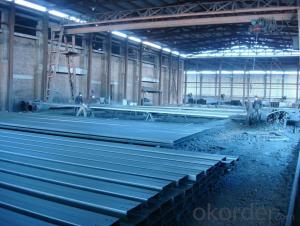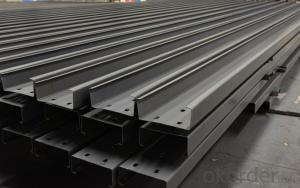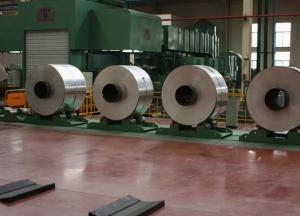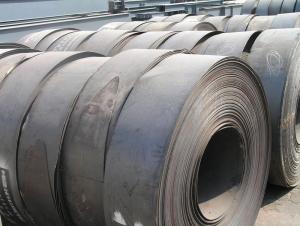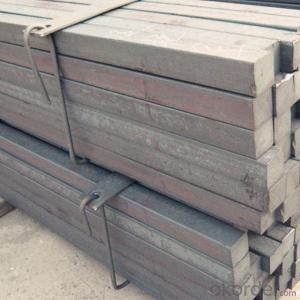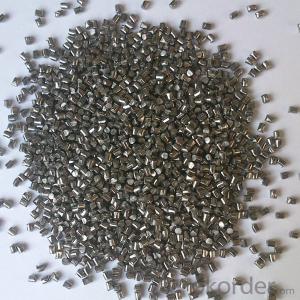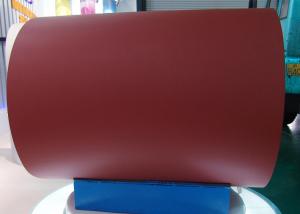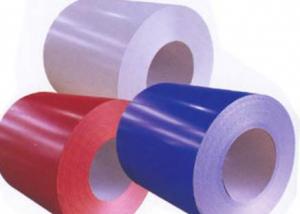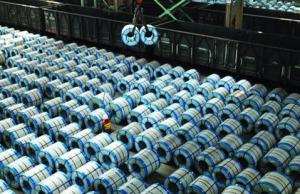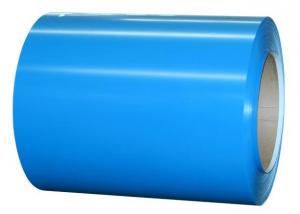Cold Rolled C Channel with High Quality C200/C220
- Loading Port:
- China main port
- Payment Terms:
- TT OR LC
- Min Order Qty:
- 100 m.t
- Supply Capability:
- 15000 m.t/month
OKorder Service Pledge
OKorder Financial Service
You Might Also Like
Item specifice
Specifications of Cold Rolled C Channel with High Quality C200/C220:
1.Our Cold Rolled C Channel with High Quality C200/C220 has lots of advantages, just as followings:
a) At reasonable price and good quality.
b) To be convenient in construction and to save much time and labor.
c) The length of Cold Rolled C Channel can be manufactured according to customer’s requirements.
d) The Cold Rolled C Channel has strong mechanical strength.
e). The Cold Rolled C Channel possesses various kind of fittings, through which it is suitbal for many combinations.
The detailed sections of Cold Rolled C Channel with High Quality C200/C220 as per GB standard:
| Model | Section size | |||
| h(mm) | b(mm) | a(mm) | s(mm) | |
| C200 | 200 | 60 | 20 | 1.6-3.2 |
| C200 | 200 | 70 | 20 | 1.6-3.2 |
| C220 | 220 | 60 | 20 | 1.6-3.2 |
The mechanical property of MS Cold Rolled C Channel with High Quality C200/C220 according to Q235B:
Alloy No | Grade | Yielding Strength Point(Mpa) | |||
Thickness(mm) | |||||
≦16 | >16-40 | >40-60 | >60-100 | ||
≧ | |||||
Q235 | B | 235 | 225 | 215 | 205 |
Alloy No | Grade | Tensile Strength(Mpa) | Elongation After Fracture(%) | |||
Thickness(mm) | ||||||
≦16 | >16-40 | >40-60 | >60-100 | |||
≧ | ||||||
G235 | B | 375-500 | 26 | 25 | 24 | 23 |
FAQ:
Q1: Why buy Materials & Equipment from OKorder.com?
A1: All products offered by OKorder.com are carefully selected from China's most reliable manufacturing enterprises. Through its ISO certifications, OKorder.com adheres to the highest standards and a commitment to supply chain safety and customer satisfaction.
Q2: How do we guarantee the quality of our products?
A2: We have established an advanced quality management system which conducts strict quality tests at every step, from raw materials to the final product. At the same time, we provide extensive follow-up service assurances as required.
Q3: How soon can we receive the product after purchase?
A3: Within three days of placing an order, we will begin production. The specific shipping date is dependent upon international and government factors, but is typically 1 to 2 months.
Q4: How many tons per bundle?
A4: Around 2-3tons
Q5: How to avoid the rust after deliver the goods to the loading port?
A5: We will keep the goods at the port covered with water-proof material
Images of Cold Rolled C Channel with High Quality C200/C220:
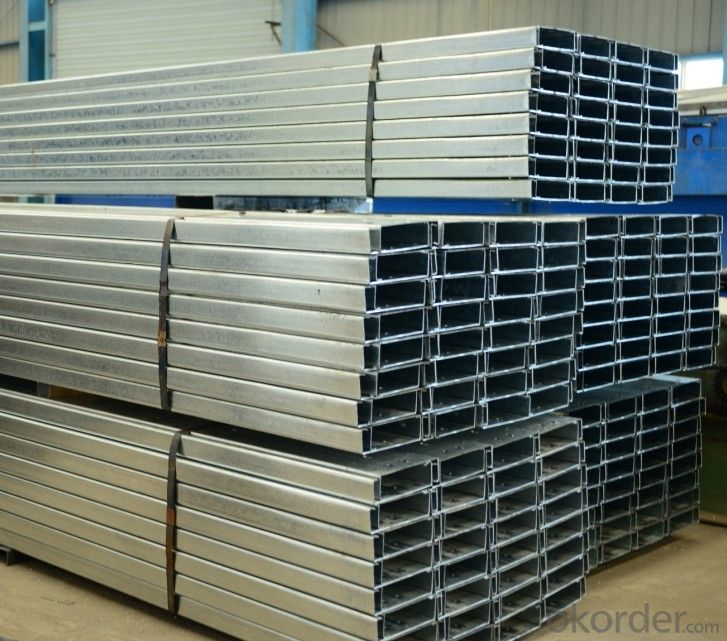
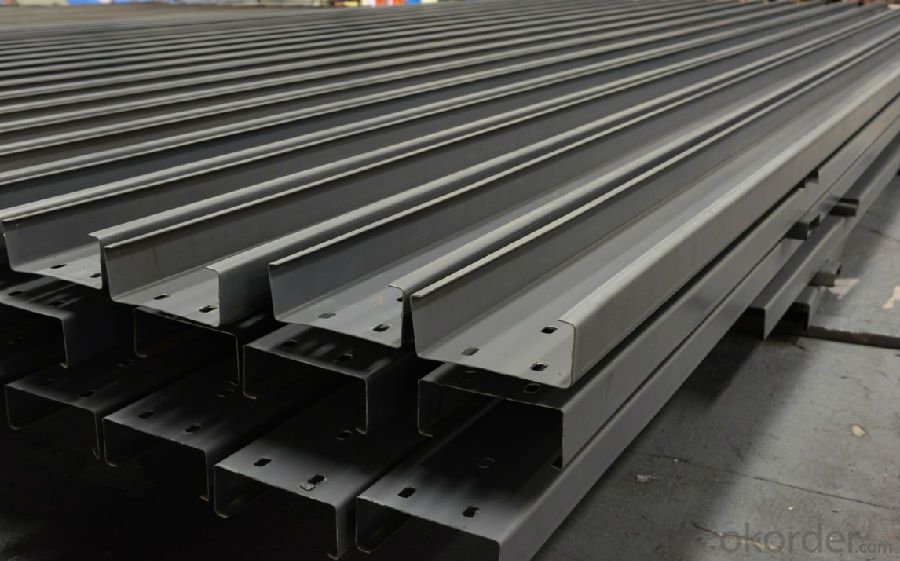
*If you would like to get our price, please inform us the size, standard/material and quantity. Thank you very much for your attention.
- Q:How is steel used in the construction of bridges?
- Steel is commonly used in the construction of bridges due to its high strength and durability. It is used in the fabrication of beams, girders, and trusses, providing crucial support and load-bearing capacity. Steel's flexibility allows for the creation of various bridge designs, including arches, suspension, and cable-stayed bridges. Additionally, steel's corrosion resistance and ability to withstand extreme weather conditions make it an ideal material for bridge construction, ensuring the longevity and safety of these vital structures.
- Q:What are the different types of steel profiles and their uses?
- There are various types of steel profiles, including I-beams, H-beams, channels, angles, and tubes. I-beams are commonly used in construction for their strength and load-bearing capabilities. H-beams are similar to I-beams but have thicker flanges, making them suitable for heavy-duty applications. Channels are often used for structural support or as track systems. Angles are commonly used for framing structures or as brackets. Tubes can be used for various purposes, such as pipe fittings or structural components. Each type of steel profile has its own unique uses and applications in different industries.
- Q:What are the applications of steel in the chemical industry?
- Steel is widely used in the chemical industry due to its exceptional properties such as high strength, durability, and resistance to corrosion. It finds applications in various equipment and structures including storage tanks, pipelines, reactors, and vessels. Steel's ability to withstand high temperatures, pressure, and harsh chemicals makes it an ideal choice for handling and transporting corrosive substances safely. Additionally, steel's versatility allows for easy fabrication and customization according to specific requirements, further enhancing its usefulness in the chemical industry.
- Q:How are steel products used in the construction of stadiums and arenas?
- Steel products are extensively used in the construction of stadiums and arenas due to their exceptional strength and durability. Steel is used to create the framework and support structures of these large-scale buildings, providing stability and withstanding heavy loads. It is used in the construction of seating areas, roofs, walls, and even the foundations. Steel products are also used to create architectural features, such as staircases, handrails, and decorative elements. Overall, steel is a crucial material in stadium and arena construction, ensuring safety, longevity, and the ability to accommodate large crowds.
- Q:How are steel products used in the manufacturing of furniture?
- Steel products are commonly used in the manufacturing of furniture to provide structural support, durability, and aesthetic appeal. Steel is often used in the construction of chair frames, table legs, and cabinet components, as it offers strength and stability. Additionally, steel can be shaped and formed into various designs and finishes, allowing for versatile and modern furniture designs.
- Q:How is steel used in the production of automotive components?
- Steel is commonly used in the production of automotive components due to its high strength and durability. It is used to manufacture various parts such as chassis, body panels, engine components, and suspension systems. The use of steel in these components ensures the safety and structural integrity of vehicles, while also providing cost-effectiveness and ease of production.
- Q:What are the different types of steel rails and their applications in railways?
- There are several types of steel rails used in railways, including standard rails, heavy rails, and crane rails. Standard rails are commonly used in railway tracks and have a specific profile designed to provide stability and support to trains. They are typically used in mainline tracks and are suitable for high-speed trains. Heavy rails are similar to standard rails but have a higher weight per meter, making them more durable and capable of withstanding heavier loads. These rails are commonly used in areas with heavy traffic or where freight trains operate. Crane rails, as the name suggests, are designed specifically for use in crane tracks. They are capable of supporting the weight of cranes and other heavy equipment, making them ideal for industrial applications. Each type of steel rail has its own specific applications based on the requirements of the railway system, such as the level of traffic, types of trains, and the weight they need to support.
- Q:What are the applications of steel gratings in industrial walkways?
- Steel gratings are widely used in industrial walkways due to their durability, strength, and versatility. These applications provide a safe and sturdy surface for workers to navigate through various industrial settings, such as factories, power plants, refineries, and construction sites. The open design of steel gratings allows for efficient drainage of liquids, preventing slip hazards and enhancing worker safety. Additionally, their robust construction can withstand heavy loads and provide excellent resistance to corrosion, making them ideal for long-term use in demanding environments.
- Q:What are the applications of steel plates?
- Steel plates have a wide range of applications across various industries such as construction, automotive, manufacturing, and shipbuilding. They are commonly used as structural elements in buildings, bridges, and infrastructure projects. Steel plates are also utilized in the production of machinery, equipment, and vehicles due to their strength, durability, and versatility. Additionally, they find applications in the energy sector for the construction of power plants and pipelines.
- Q:How is steel used in the production of pipelines?
- Steel is commonly used in the production of pipelines due to its strength, durability, and corrosion resistance. It is used to manufacture the pipe itself, providing a reliable and long-lasting material for transporting fluids and gases over long distances. Steel pipes are also commonly coated or lined to further enhance their resistance to corrosion and improve their overall performance in various environments.
1. Manufacturer Overview |
|
|---|---|
| Location | |
| Year Established | |
| Annual Output Value | |
| Main Markets | |
| Company Certifications | |
2. Manufacturer Certificates |
|
|---|---|
| a) Certification Name | |
| Range | |
| Reference | |
| Validity Period | |
3. Manufacturer Capability |
|
|---|---|
| a)Trade Capacity | |
| Nearest Port | |
| Export Percentage | |
| No.of Employees in Trade Department | |
| Language Spoken: | |
| b)Factory Information | |
| Factory Size: | |
| No. of Production Lines | |
| Contract Manufacturing | |
| Product Price Range | |
Send your message to us
Cold Rolled C Channel with High Quality C200/C220
- Loading Port:
- China main port
- Payment Terms:
- TT OR LC
- Min Order Qty:
- 100 m.t
- Supply Capability:
- 15000 m.t/month
OKorder Service Pledge
OKorder Financial Service
Similar products
New products
Hot products
Related keywords

